Ground Situation
The end-of-year reports emanating from various Home Departments of the States affected by the Maoist rebellion indicates that the downtrend in violence, as seen during the preceding year, continues. Even if marred by the ambush at the Darbha Ghati (Valley) on the Chhattisgarh-Odisha Border on 25 May 2013, this is a hopeful sign. After all, de-escalatory trends in acts of anti-state insurrection offers the first hint of situational de-conflagration. If handled with sagaciously articulated strategy of hard and soft power, it paves the way for establishment of an environment of peace and stability in which the people may seek amelioration of their grievances, while the government may respond with due alacrity.
Signs, however, could also be misleading, particularly when these point towards what one optimistically wants to believe. Therefore, it would be wise to rely on first-hand ground survey of the situation while strategising for the coming phase of Counter-Maoist initiatives. This report is an attempt towards that end.
Build-up of State Capabilities
It was some time in the Year 2010, when pitted against vicious Maoist onslaught, the policy-makers had to turn their illusionary rhetoric into serious intent. Thus from the time the State Governments came around to accede to the Union Government’s counter-rebellion strategy, haltingly but inexorably, the state apparatus is being strengthened in grappling with the Maoist menace. Even if fraught with glaring slippages, leakages and inefficiency, the build up of the state’s internal security capability has been going up since then.
Build-up of Security Infrastructure
In enhancement of armed capability for the police forces, the elaborate schemes for expansion, training and modernisation continue to be exasperatingly slow in coming. The seven year old ‘Scheme for Fortified Police Stations’, which was necessitated by Maoists’ frequent mass-attacks and loot of weapons, and the public outcry against massacre of their own policemen-folks, proceeds at a languid pace, the constructions inspiring confidence neither in technical nor tactical terms. Between the threats of looming attacks, the commitment to reconstruct 400 of what are but ruins of British era police stations seems to be waxing and waning. As a result, the project has not crossed the half way stage; where construction has been executed, there remain parts left incomplete.
Security infrastructure is also being build-up under the Union Government aided ‘Security Related Expenditure’ and ‘Special Infrastructure Scheme’. The first one caters to expenditure on enhancement of administrative wherewithal, surrender and rehabilitation of rebels, formation of Village Defence Committees, community policing, publicity and motivation, and information gathering; while the second head funds security specific road building, preparation of camping grounds for police details in distant areas, construction of secure policing outposts in vulnerable locations, helipads, communication facilities etc. Progress of project implementation is however very slow, the reasons being as follows:-
a. There is an average time lag of two to three years between a political statement and commencement of the scheme at the point of execution. This lag is on account of budgetary tricks which the government must resort to in funding these schemes through re-prioritisation and re-appropriation from a budget that is already overburdened by the game of voter appeasement. Due to intermittent release of funds, it may take another two to three years before the schemes gather moderate pace, that is, if not diverted or relegated in favour of new expediencies.
b. The government departments, besides being culturally inefficient and unscrupulously corrupt, do not even have the necessary wherewithal to execute works across isolated areas with due fiscal and technical prudence. Public projects are viewed as licence to distribute what may be described as ‘percentage cuts’, compromise construction specifications and enrich politicians, contractors, state functionaries and cronies, even the intended beneficiaries of the works are weaned away from complaining.
These ingrained debilitations are unlikely to go away anytime soon.
Build-up of Police Forces
While recruitment to fill up existing vacancies in State police ranks goes on, new raisings of specialised counter-insurgency forces have been undertaken at the State as well as Central level. State Governments have thus raised between two to four such specialist battalions manned by ex-servicemen, though the manner of their employment and control remains somewhat misdirected. Among the Central Armed Police forces (CAPF), the Central Reserve Police Force (CRPF) has raised ten specialist battalions, referred to as the ‘Commando Battalion for Resolute Action’ (CoBRA) and recently renamed as the ‘Special Action Force’. Fit and well trained, these units have been deployed effectively. The concept of ‘India Reserve Battalions’ (IRB), manned by local levies, has been extended to raise 46 units in the nine affected States. Thirty three of these have been raised; some of these have even been designated as ‘specialist’ IRBs; the renaming appears to be aimed at finding higher emoluments rather than obtaining robust counter-insurgency ability.
The overall level of training, motivation and equipment of the police forces remains little more than basic. Training establishments being limited, training of recruits as well as serving policemen pose the biggest hurdle. Though 12 Counter-Insurgency & Counter-Terrorism Schools (CICTS) out of 15 sanctioned in various States have been raised, actually these are just add-ons to the existing State armed police battalion lines. Obviously, the training facilities are woefully inadequate in terms of quality as well as quantity. While announcing the intended measures to control the rebellion, realisation that it takes three years or so before a policeman may be considered to be adequately trained in counter-insurgency role, seems to be overlooked.
Issues which require attention in this regard are as follows:-
a. Recruitment drives in the States have been prone to malpractices and mired in party and caste manipulations. Thus scams, enquiries and court cases have put paid to the process.
b. Disconcertingly, it is found that there is a dearth of recruitable candidates, either on account of poor education or opportunistic mentality. The quality of policemen that these would make, is therefore questionable.
c. Establishment of regular CICT Schools is affected due to lack of competent trainers and hurdles, real or invented, posed against allotment of land.
Police Modernisation
The drive for police modernisation, funded under the ‘Scheme for Modernisation of State Police Forces’ has started to bear fruition. Protective and communication equipment, transport, vision devices, search equipment and light weaponry of modern variety are being procured at a brisk pace. Thus, even after diversion of these items to serve the multitude of VIPs, much of these are becoming available to the policemen deployed on ground. Quality control and in-service maintenance of these stocks however remains a major problem. Unless attended to with due alacrity, this deficiency would affect forces’ efficiency, besides leading to fiscal wastage.
Execution of Civic Schemes
The Integrated Action Plan (IAP), that is devised by the Planning Commission to ameliorate the root causes of people’s alignment with the Maoists, is sustained by nearly a dozen schemes. These schemes are mostly funded conjointly by the States and the Centre. Thus the nation-wide schemes – the ‘Mahatma Gandhi National Rural Employment Guarantee Act’ (MGNERGA), ‘Pradhan Mantri Gram Sadak Yojana’ (PMGSY), ‘National Rural Health Mission’ (NRHM), ‘Ashram Schools’, ‘Sarva Shiksha Abhiyan’ (SSA), ‘National Rural Drinking Water Programme’ (NRDWP), ‘Rajiv Gandhi Grameen Vidyutikaran Yojana’ (RGGVY), ‘Integrated Child Development Services’ (ICDS) and the ‘ Indira Awaas Yojana’ (IAY) - are being reinforced in 82 Maoist affected districts. Meanwhile, a ‘Road Requirement Plan – Part I’ (RRP-I) to develop access roads to the interiors of 34 worst Maoist affected districts is also under planning and pilot-execution stage.
Most of the above listed schemes remain at a nascent stage of implementation. The stumbling blocks are, as discussed earlier, the weak executive mechanism and erratic schedule of funding. Yet, the mere hint of development, combined with the prospects of managing individual and group benefits, has infused a remarkable degree of enthusiasm among the people; even the rebel cadres are attracted, much to the chagrin of Maoist ideologues. The ‘Scheduled Tribes and Other Traditional Forest Dwellers (Recognition of Forest Rights) Act, 2006’ has come to the point of reckoning in the local matters. Provisions of this Act, in conjunction with the food programmes for the poor which have been sponsored by almost all the States and the recently promulgated ‘National Food Security Act, 2013’, has caused the Maoist cause to be further marginalised. Maoists hope that this popular distraction from their cause is but temporary and soon the failure of what they claim to be a “morally degenerated and corrupt governing system” would strengthen the rebellion with increased vigour.
The Maoist’s Fare
The preceding years have not been particularly good for the Maoists. The problems they face may be summarised as follows:-
a. They have lost many of their iconic leaders, replacements against which have been found wanting in terms of skills and competence if not commitment to the cause.
b. They have grown to the limit of their fiscal sustainability. Therefore, to strengthen and up-stage the rebellion, they have to find additional sources of funds. Contrarily, with economic slowdown and rising pitch against ecological and social exploitation of natural assets, of which the Maoists themselves have been the leading crusaders, their ‘collections’ have been compromised. The endeavour to generate more funds has suffered a setback.
c. Their best efforts to strengthen influence over urban centres has failed to bear tangible fruition. Due to this failure, wider catchment for fund generation, manipulative propaganda and escalation to higher level of insurgency has stagnated.
d. Vulnerable posts and armouries having been either fortified or withdrawn, and forces better equipped, it is no more easy for the Maoists to attack police posts and loot weapons. Similarly, with infusion of some measures to control illegal trade of weapons and explosives, the free run of the rebels has been somewhat curtailed.
e. Maoists realise that it is a matter of time before the state gears up to stand up to their intransigence. It is therefore imperative for them to build up their armed strength to be able to confront a better prepared police force, and at the same time, sabotage the government’s efforts to engage with people through civic action. This they have to do without being branded as obstructionists in the eyes of the people and thus antagonising their supportive constituency.
The aforementioned situation has caused the Maoist rebels to take a preparatory pause – barring opportunistic strikes to keep the threat alive – and focus on building up for the imminent confrontation with the state. The thrust therefore is on looking out for collaboration with radical groups of the North-East and the West Coast, and invigorating the dormant cells among North India’s university students, faculties and urban societies. Interlocutors have also been trying to procure weapons and equipment through the North-Eastern conduits - with unknown degree of success.
Meanwhile, the build-up of the ‘People’s Liberation Guerrilla Army’ (PLGA) as well as the ‘People’s Militia’ proceeds undisturbed in deep jungles. Maoists continue to ‘govern’ their ‘liberated zones’ and continue to carry on with extortion, punishment, recruitment etc in areas under their ‘control’. Acting smart of late, they have hijacked the mantle of ‘monitoring’ or even remodelling the government’s development schemes to suit their or their local sympathiser’s preferences - diktats that the state’s executives would defy at their peril. ‘Safe areas’, where no incidents are to be perpetrated so as to avoid state’s reaction, have been designated in Eastern Uttar Pradesh, Madhya Pradesh and Maharashtra, from where the rebellion is directed.
The Political Scene
Of late, Maoist rebellion has assumed the character of a profitable industry in which apart from the hard core rebels, there are beneficiaries of various hues. These beneficiaries range from part-time or pretending Maoist extortionists, profiteering traders, illegal miners, unlicensed transporters, shaming contractors and corrupt officials, who are in informal league with each other as they are with many of the Maoist leaders. As for the common man, he has little to lose; on the other hand he is relieved from the clutches of the arrogant and demanding revenue and police functionaries. At the ground level, no one seems to be complaining. Politics having become a game of voter appeasement, it would therefore be interesting to touch upon the attitude displayed by the State level political leaders with regard to the challenge of Maoist intransigence.
All the State Governments, particularly those of the six most Maoist affected Sates – Chhattisgarh, Jharkhand, Odisha, Bihar, West Bengal and Maharashtra - exude confident demeanour of being competent to tackle the situation. They firmly believe that they, rather than the distant functionaries of the Central Government, understand the situation the best. Alive to the socio-economic dimensions of the rebellion, they profess that the entrenched causes of the rebellion cannot really be rooted out, and that the answer lies in diluting and then subsuming the issues into the normative course of political process. Indeed, they have a strong point.
Presently, unable to exert due authority, State Governments have chosen to look the other way, if not endorse, the coalescence of a live-and-let-live arrangement among the local activists, officials, traders, contractors and industrial houses with the Maoist Area Commanders in order to maintain societal equilibrium, even if it is an skewed one. To avoid massacre and mayhem, all States have restrained their police from becoming too active during the transitory period of build up. Even then there are some contrasts in the policies adopted by different States. The Chhattisgarh Government is engaged in balanced police and socio-economic action; Jharkhand remains inert doing practically nothing at all for or against the state, the people or the rebels; Odisha focuses on quieter areas leaving the troubled ones out; Bihar is stoic while undertaking occasional police actions when the Maoists go too far in upsetting the nexus of ‘equilibrium’; in West Bengal political cadres have displaced the rebels so much so that it is difficult to tell them apart; and Maharashtra is surely and gradually gaining the Maoist’s turf.
The nation’s demand for economic development cannot be delinked with harness of natural resources that lie in the troubled plateau-lands. Therefore, an eventual state-insurgent showdown is only to be expected. Presently, while both sides girdle up for that inevitability, there seems to be no urge or urgency to disrupt what may be termed as an informally understood ‘equilibrium of stalemate’, barring, of course, occasional forays against the adversary to keep the business going.
Prognosis
The rebellion is sustained not by socialist ideals but by people’s disillusionment with an apathetical state, on which the fanatical Maoists feed. The state leadership is aware that the intransigence having grown all-profitable roots, it is banal to expect it to be defeated in short time and by force alone. The idea therefore is to deflate the rebellion by weaning away its support base of the local people. That end is sought to be achieved by addressing the people’s consternation with the governing system, or when full redress is impractical to find, proposing compensatory alternatives. That it will take a long time to do so, is well appreciated. However, it is expected that as signs of state-citizen understanding emerge, it would trigger a cascading effect in dilution of people’s grievances. Recalcitrance from hard core armed rebels are to be expected yet, which are to be dealt with duly strengthened police force. Finally, having been defanged, it is expected that the Maoist remnants would either be marginalised or assimilated into the political process, as indeed it has happened in the past with many similar groups of radicals.
In contrast, the Maoist leadership’s immediate aim is to prevent the state’s intrusion into their ‘liberated zones’ and so preserve their ‘rule’. They wish to ‘liberate’ more such areas over which they currently exercise control or influence, but to do so, armed cadres need to be strengthened. That calls for larger fund collection, which in turn is contingent upon spread of tentacles over financial and political hubs. Focus of the Maoists is therefore on fund collection and procurement of weapons. They realise that they have no more than two to three years to achieve that end before the police forces are sufficiently strengthened to deal with them while state sponsored socio-economic measures start divesting them of the people’s solidarity.
In the coming two years or so, barring disruption of development schemes for the purposes of extortion, and occasional confrontation between police forces and the rebels to keep the threat alive, the state as well as the Maoist rebels are likely to focus on their respective ‘build up’.
The current phase of relative quietude is but in preparation for an eventual escalation in armed confrontation.
Published Date: 20th February 2014, Image source: http://lite.epaper.timesofindia.com

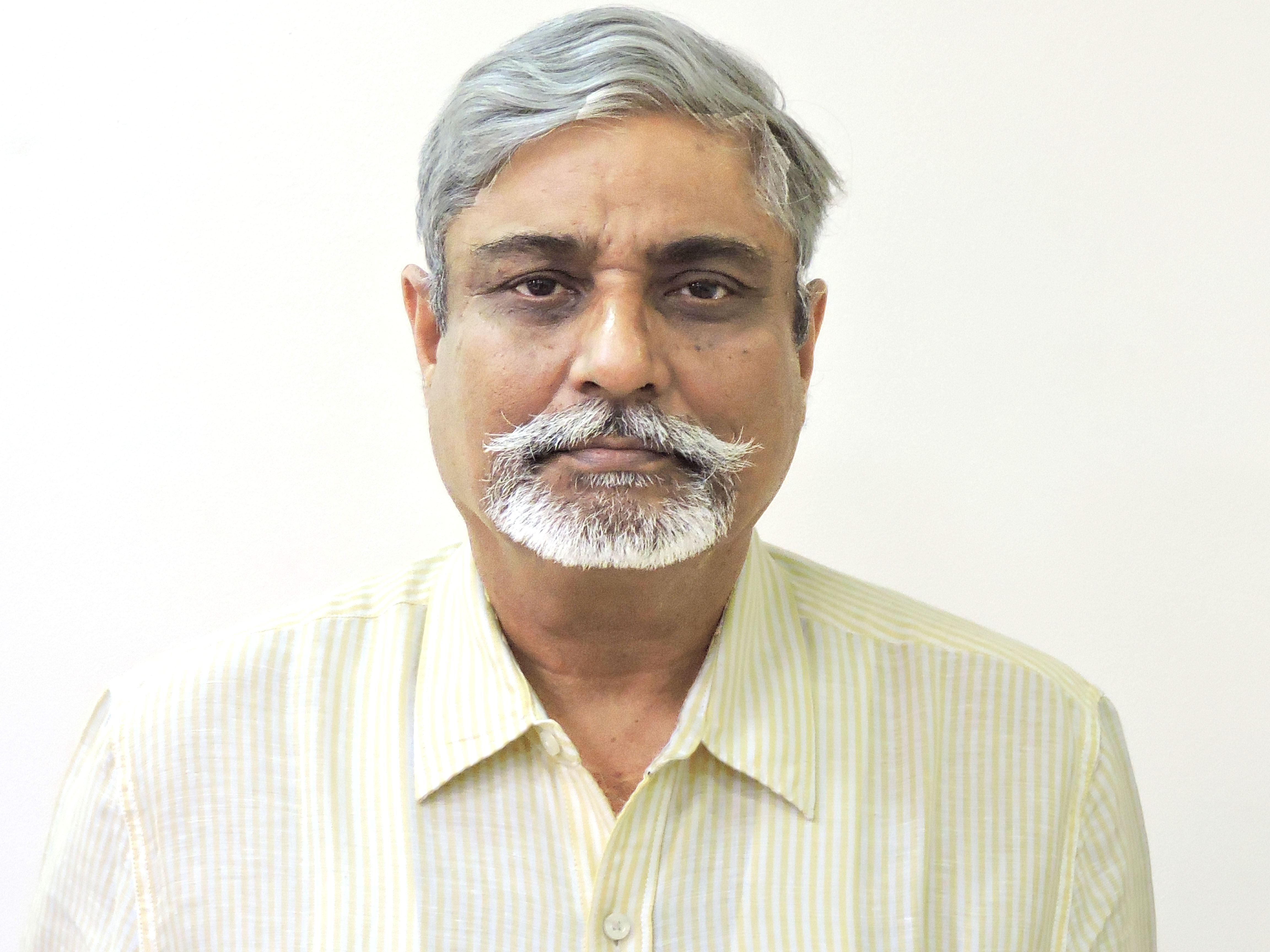


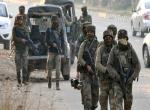
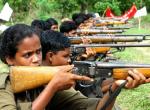


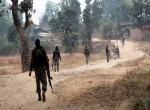
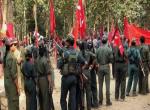
Post new comment